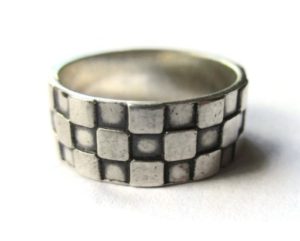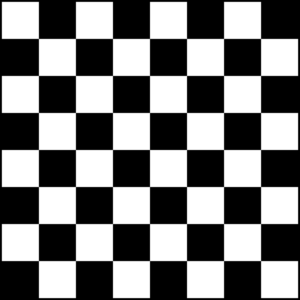Liisa Vitali (born in Helsinki, Finland on 9 November 1918, died on her 69th birthday, 9 November 1987) was a Finnish jewellery designer and maker known for her modernist designs that were often drawn from nature. Her jewellery series include the ‘Ladybird’, ‘Lace’, ‘Gardenia’ and ‘Cat’s paw’ designs.
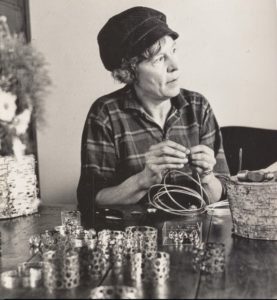
Liisa Vitali.
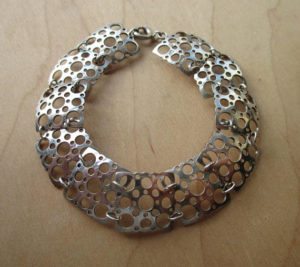
Liisa Vitali Pitsi (‘Lace’) bracelet, 1973, in sterling silver. For sale in my Etsy shop: click on photo for details.
Liisa’s family moved to a farm at Viluksela, a small village in the municipality of Somero in southern Finland, in 1920. After the death of her parents, Liisa and her brother Väinö continued to look after the farm. Liisa had long been interested in jewellery design, winning a school competition with a jewellery set that she had made.
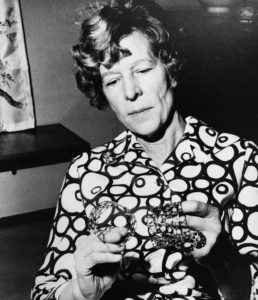
Liisa Vitali. Love how her blouse matches her jewellery!
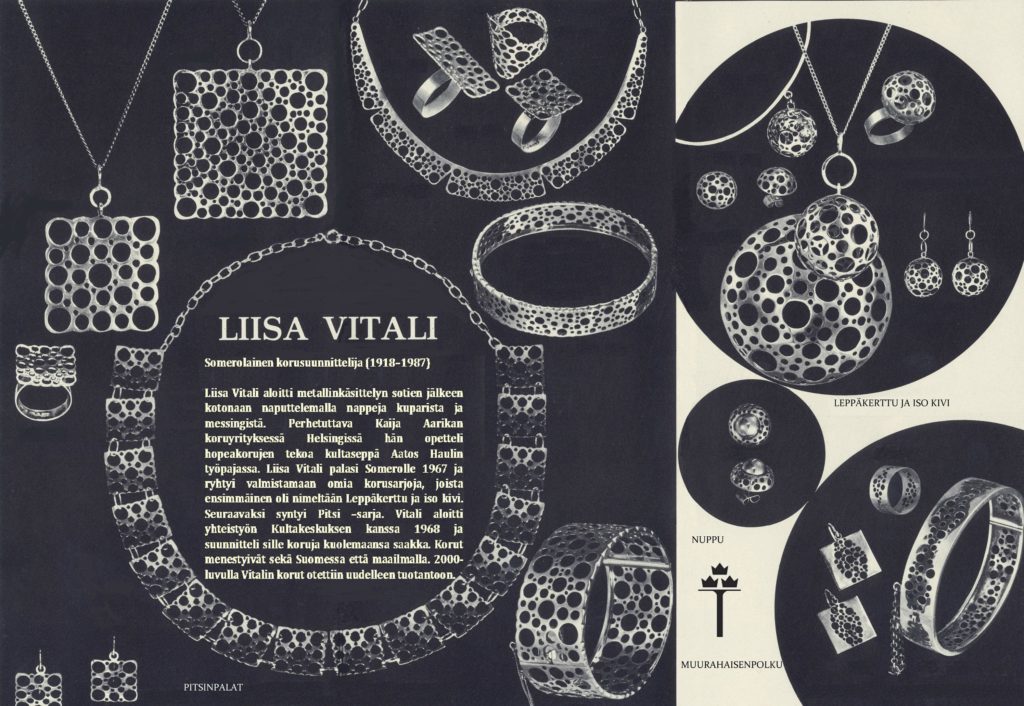
Some of Liisa Vitali’s designs, including Pitsi (‘Lace’) in the main panel, Leppäkerttu ja iso kivi (‘Ladybird and big stone’) top right, Nuppu (‘Bud’) middle right, and Muurahaisenpolku (‘Ant’s path’ or ‘Ant trail’) bottom right.
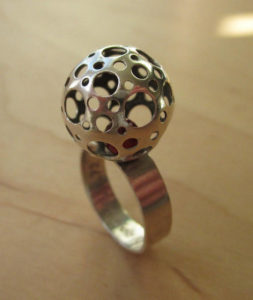
1971 Liisa Vitali ‘Ladybird’ sterling silver ring with trapped carnelian orb. For sale in my Etsy shop: click on photo for details (NOW SOLD).
As I don’t read Finnish I have found it hard to piece together much more about Liisa’s life: there appear to be conflicting reports of her training, or lack thereof, and which jewellers she may or may not have worked with.
I have read that she started making jewellery to sell in the 1950s, self-taught and working from a home workshop on a small scale in between her farming duties; that she started her career in jewellery-making working for jeweller Kaija Aarikka; that she trained for a short time alongside the great designer Tapio Wirkkala at the Nestor Westerback workshop; that at first her designs were only available from her workshop on the farm, and from Kaija Aarikka’s shop.
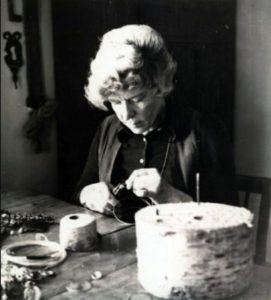
Vitali’s designs were manufactured by various companies, including Aatos Hauli, Mauri Sarparanta, Nestor Westerback Ky, and Kultakeskus.
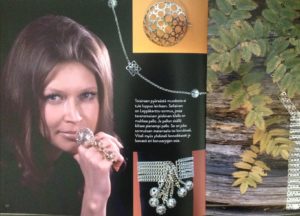
1960s advert for Liisa Vitali’s jewellery.
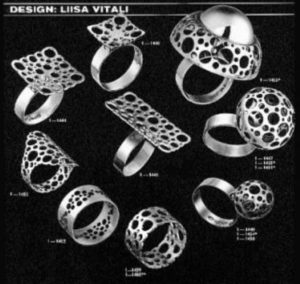
Some of Liisa Vitali’s designs, including examples of Pitsi (‘Lace’), Leppäkerttu ja iso kivi (‘Ladybird and big stone’), Nuppu (‘Bud’), and Muurahaisenpolku (‘Ant trail’).
Perhaps her most famous designs are the Leppäkerttu ja iso kivi (‘Ladybird and big stone’, ‘Ladybird’ or ‘Ladybug’) and Pitsi (‘Lace’) series. These are visually very similar, with circular cut-outs in sheet silver or less commonly gold, forming a lacy, holey effect. She also used the lacy cut-outs in her Nuppu (‘Bud’) and Muurahaisenpolku (‘Ant trail’) series. Her love of the natural world is clear in her jewellery, and the inspiration it provided her with can be seen in the names she chose for her various series.
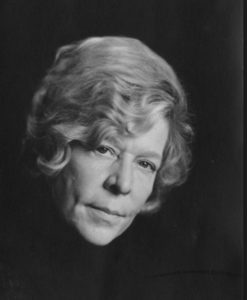
Liisa Vitali.
During her life, Vitali’s work was highly thought-of, and was exported around the world. Apparently Princess Margaret was a fan. Following her death and changing fashions, it fell out of vogue for a while. In 2009 Kultakeskus Oy began to remanufacture Vitali’s designs, bringing them to a whole new audience.
Some named designs by Liisa Vitali:
Ampiaisenpesä (‘Beehive’)
Gardenia (‘Gardenia’)
Kesäheinä (‘Summer hay’)
Kevät (‘Spring’)
Kissantassujen (‘Cat’s paws’)
Leinikki (‘Buttercup’)
Lemmenkukka
Leppäkerttu, Leppäkerttu ja iso kivi (‘Ladybird’, ‘Ladybird and big stone’, ‘Ladybug’)
Muurahaisenpolku (‘Ant trail’)
Nuppu (‘Bud’ or ‘flowerbud’)
Nyöri (‘Cordon’)
Pitsi (‘Lace’)
Ruusu (‘Rose’)
Tuulenpesä (‘The wind’s nest’)
Villiviini (‘Wild wine’)
Further reading:
Leeni Tiirakari 2012, Design Liisa Vitali, Amanita. Available from a Finnish online bookseller.
